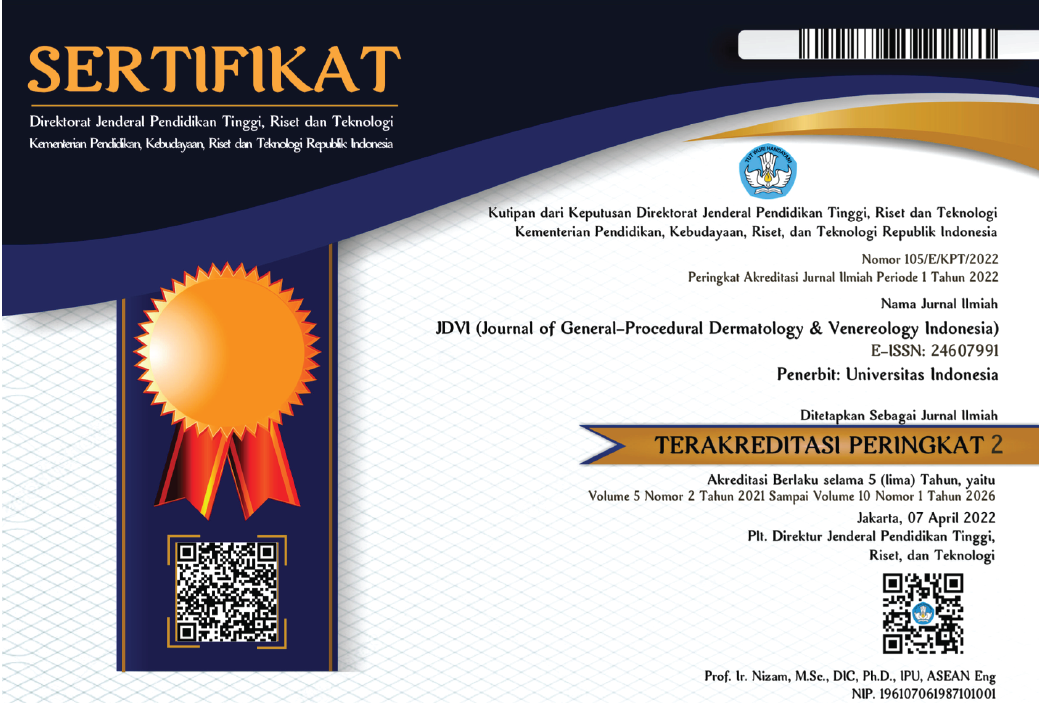Abstract
Background: Longitudinal melanonychia (LM) describes a longitudinal brown-to-black band of discoloration affecting a finger, thumb, or toenail. Discoloration of the nails can be a sign of benign or malignant nail disorders. Although nail melanoma rarely occurs in children, health practitioners should be aware of melanonychia. Dermoscopy and histopathology are helpful in the diagnosis.
Case Illustration: A case of LM in a thirteen-year-old girl was reported with a complaint of brownish-black discoloration, sometimes painful, on her right thumb since 1 year ago. She had no history of trauma, nail damage, or bleeding tendency. Dermatological examination found a homogeneous brownish-black band on the right thumbnail. Dermoscopy revealed regular, homogeneous black linear pigmentation and pigment through the translucent cuticle and proximal nail fold (pseudo-Hutchinson’s sign). Punch biopsy was done on proximal nail fold reaching nail matrix. Histopathology revealed increased melanocytes, some nests of melanocytes in rete Malpighi, and no atypical cells. She was diagnosed with nail matrix nevus. Five months after the punch biopsy, the nail grew well without onychodystrophy.
Discussion: Nail matrix nevus is a benign LM. Diagnosis is based on anamnesis, physical examination, dermoscopy, and histopathology. Dermoscopy of the nails is a useful, quick, non-invasive, and highly effective tool that may help differentiate benign or malign melanonychia.
Conclusion: Histopathology is important to determine whether the pigmented lesion is benign or malignant.
Recommended Citation
Putri, Heffi Anindya; Asri, Ennesta; and Anum, Qaira
(2022)
"A Case of Longitudinal Melanonychia in A Child: Benign or Malignant?,"
Journal of General - Procedural Dermatology and Venereology Indonesia: Vol. 6:
Iss.
2, Article 9.
DOI: 10.7454/jdvi.v6i2.1008
Available at:
https://scholarhub.ui.ac.id/jdvi/vol6/iss2/9
Included in
Dermatology Commons, Integumentary System Commons, Skin and Connective Tissue Diseases Commons






























